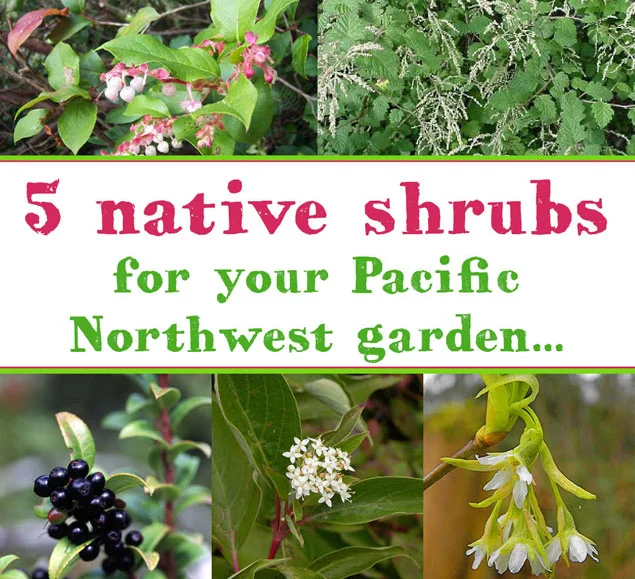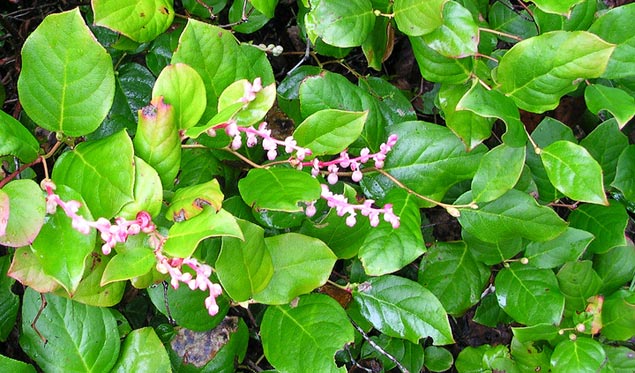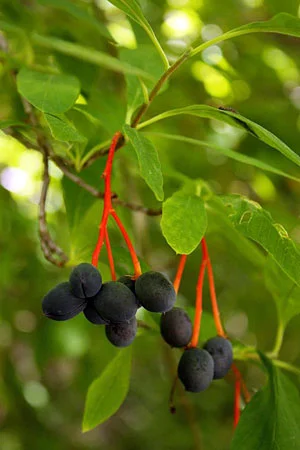Written by Marina French, PLA
Clockwise from top left. Salal by Jami Dwyer. Oceanspray by US Forest Service. Osoberry by Peter Stevens. Red-osier dogwood flowers by Matt Lavin. Evergreen huckleberry by US Fish & Wildlife.
The palette of native shrubs to choose from in the Pacific Northwest is so wide and varied that it can be difficult to narrow down your options when the time comes to start planting. Some natives are notoriously difficult to propagate and are hard to find in nurseries, while others can spread like weeds.
Here are five native shrubs that have a proven track record in our landscape designs at The Watershed Company. As an added bonus, several of these native shrubs offer up tasty berries — for you and your neighborhood birds. Each shrub has its own tolerances and preferences, of course, but these five are very likely to find a place in your garden.
Red-Osier Dogwood
Cornus sericea
Red-osier dogwood's distinctive red branches in winter. Photo by USDA
This elegant shrub is a winter highlight, with stems that are often bright red, especially after a frost. When its lush green, oval leaves emerge in the spring, the color contrast with the red stems is breathtaking. A relative of flowering dogwood, red-osier dogwood has open clusters of small white flowers. It is an excellent choice for erosion control on streambanks, preferring moist environments. While it is comfortable in sun or shade, planting Red-Osier dogwood in a moist, sunny spot will give it the opportunity to thrive, quickly forming a large thicket that, with the help of its plentiful berries, creates a perfect bird habitat.
Salal
Gaultheria shallon
Salal by J. Brew.
It’s hard to walk in the woods in the Pacific Northwest without encountering salal. The tough evergreen leaves are harvested and used in floral arrangements worldwide, and its large, edible berries, though sometimes bland and mealy, can be harvested to make a delicious jelly. As an understory shrub, salal prefers shade to part shade, and, once established, it will spread and become a great, low-maintenance ground cover for shady areas where other plants have trouble growing.
Oceanspray
Holodiscus discolor
Bubbly stem of Oceanspray's delicate creamy flowers by Walter Siegmund
Many people favor cultivated ornamentals over natives because they perceive natives to be delicate and difficult to transplant. If there was one native plant to completely explode that notion, it would be oceanspray. This plant is toughness incarnate. Happy in sun or shade, wet or dry, oceanspray is one of the hardest native plants to kill, try as you might. As an added bonus, it’s also a relatively fast growing plant, especially in sunny spots, so buying a 1 gallon oceanspray can be a great solution for filling a hole in your landscape.
In late spring, cascades of large, white to cream-colored flower plumes cover the entire plant, attracting butterflies and other pollinators. These flower clusters will eventually turn brown and remain on the plant through the winter. The dense structure of oceanspray makes it extremely valuable wildlife habitat, providing shelter and food (in the form of insects) for insectivorous birds such as chickadees and bushtits.
Evergreen Huckleberry
Vaccinium ovatum
Evergreen huckleberry is an especially attractive and adaptable native shrub. It provides beautiful color variations throughout the year, with deep wine-red new shoots contrasting with the rest of the dark, glossy green foliage and pale pink flowers in the spring, berries that change from red to dark purple in the summer, and lush green foliage throughout the fall and winter.
One of evergreen huckleberry’s most interesting characteristics is its dual nature under different light conditions. While it is most at home as an understory shrub, it can also tolerate sun. Somewhat paradoxically, the more sun it gets, the smaller it will be: evergreen huckleberries can grow to twelve feet or more under dense canopy, but only reach about five feet in full sun. Its foliage color is also affected by sunlight: an evergreen huckleberry in full sun develops a reddish-purple color that, paired with its small stature, makes it a great accent shrub for sunny front yards.
No discussion of evergreen huckleberry would be complete without mentioning its fruit. The berries, while very small, are full of flavor, with a fresh, tart sweetness that makes the trouble of harvesting them well worth it.
Osoberry fruit by Leslie Seaton.
Osoberry
Oemleria cerasiformis
Osoberry, sometimes called “Indian-plum,” is the first native shrub to leaf out and flower in the spring. It’s often the only flower that early-emerging bees can use for food. Though the small, purple plums that female osoberry shrubs produce in the summer are bitter and astringent, birds love them. Some people say the crushed leaves smell like watermelon! Highly adaptable, osoberry can be placed virtually anywhere in the garden, though it prefers dappled sunlight and moderate moisture.
Next Step: Planting Your Native Plants
Once you start planting natives in your garden, it will be hard to limit yourself to only 5 shrubs! Luckily, there are many more to choose from. If you're not looking for shrubs, here are five other native plants we love. For a more comprehensive list of Washington natives, the Lady Bird Johnson Wildflower Center offers a great native plant finder.
If you’re still not convinced why you should plant native plants in your garden, let me try to change your mind.
Finally, when you’re ready to start shopping, we've got advice on getting the most bang for your buck when buying plants. Happy planting!












